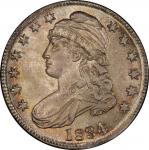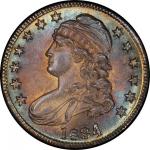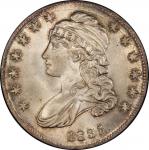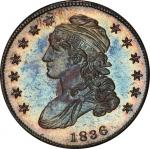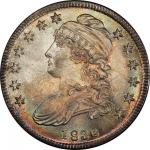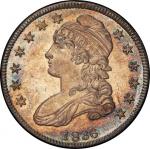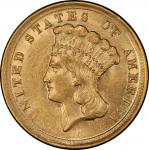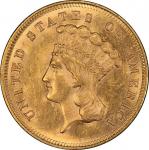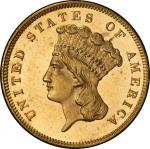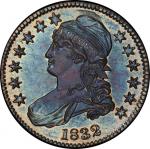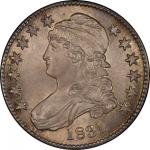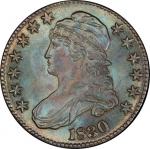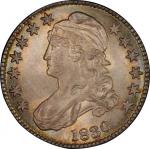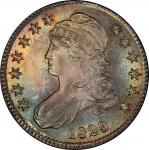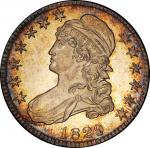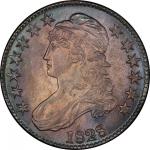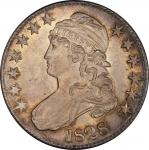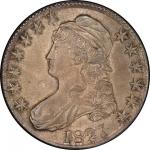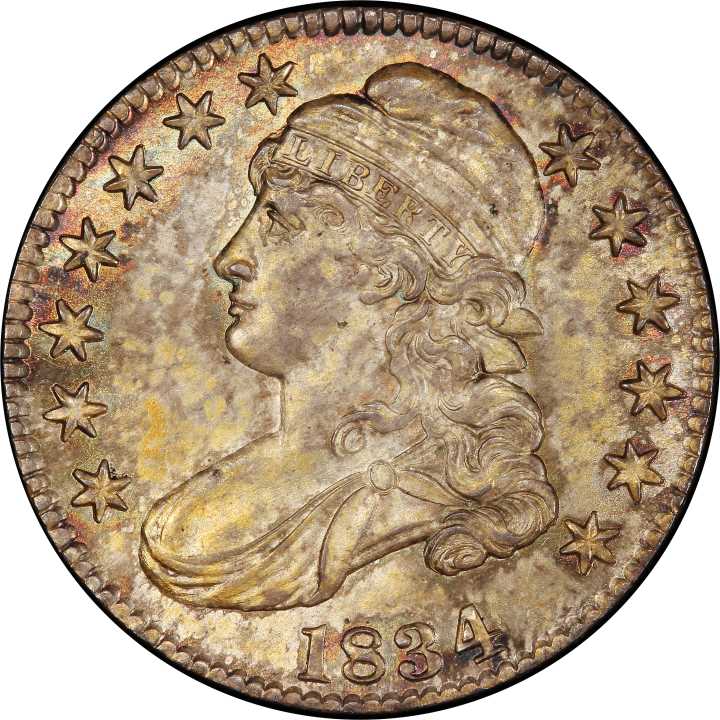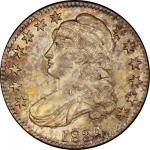“Half dollars, as it is well known, are the most numerous, and constitute one half the whole number of pieces coined.” — The Adams Sentinel, Gettysburg, Pennsylvania, January 20, 1834 A distinctively mottled pattern of pewter gray, gold, dusky rose, and pale blue covers the obverse, while the reverse is a more typical blend of golden gray that finds highlights of attractive iridescence near the rims. Cartwheel luster spins with dispatch over the frosty surfaces, unbroken and bright. Some softness of strike is present in the usual places, including some of Liberty’s rounded curls, her nose and brow, and the area left of the shield. Most stars have a preponderance of their central detail. Only the most trivial of marks are noted, including a hairline in the field near Liberty’s chin and a contact mark above the 8 in the date, along with some inconsequential specks to the northeast of star 1 and elsewhere. The only vestige of die clashing that is readily apparent appears beneath the wing at right, though the reason for this scarcity of clash marks is seen beneath the other wing, manifesting as several thick lapping lines that extend from the eagle’s body into the wingpit at left. Other similar lines are seen above the wing at left and amidst the details of the shield. Some lighter evidence of lapping is seen on Liberty’s portrait. A heavily inscribed guide line arcs around the ends of the reverse denticles, most prominent at the upper half of that side. From the denticle above the space between stars 8 and 9, a short die crack extends to the top point of star 9. Three die varieties compose the short-lived 1834 Large Date, Large Letters type: O-101, O-102, and O-103. These coins look like 1833 half dollars, using the same size numeral punches, star punches, and letter punches on the reverse. Later 1834 die varieties use smaller stars and letters, more closely resembling the half dollars of 1835. With nearly six and a half million coins produced, 1834 half dollars are common in most grades. With a mintage more than three times that of cents, half dollars compose more than half of all coins struck by the United States Mint in 1834, making them the most numerous coins struck at the Mint this year. While some authors have attributed this plenitude of silver coinage to money received from the French in repayment for Napoleon’s abuses of American shipping (the so-called French Indemnity), the payments did not begin arriving from France until 1836. Walter Breen’s timeline on the coins struck from the French Indemnity is correct. While 1834 half dollars are, by and large, widely available in a variety of grades, gems like this are not included in the generalization. This specimen is tied with one other coin as the finest PCGS-graded examples of the Large Date, Large Letters variety. No PCGS MS-66 has ever before been offered at auction, and those grading MS-65 have been offered only occasionally. Nearly two decades after it sold in the Pittman sale, this coin remains atop Stephen Herrman’s listing of this variety. Interestingly, Wayte Raymond charged 25% more for this coin than for the 1832 and 1833 half dollars he sold John Jay Pittman on the same date in May 1946. Those two coins cost $2 each; both are included in this sale, graded MS-67 and MS-67+, respectively. A gem 1831 half dollar acquired on the same day cost Mr. Pittman $2.25. PCGS# 39905. NGC ID: 24FY.

